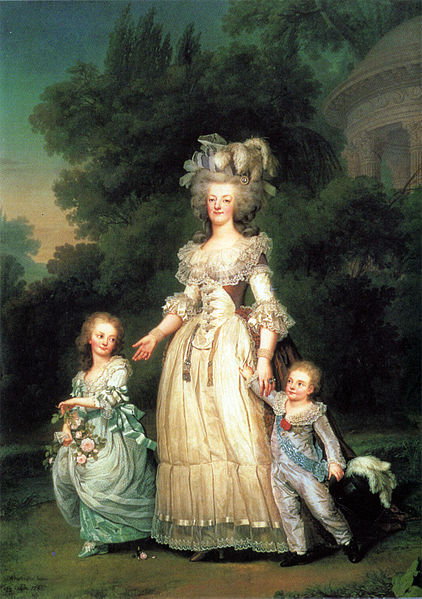When Charlotte Anne Moberly and Eleanor Jourdain arrived at the palace of Versailles in 1901, nothing initially seemed amiss. Being good English spinsters, they had never toured France before, and were properly charmed by the place. When they walked further into the grounds, however, they were struck by a strong sensation of melancholy, and by the time they reached Marie Antoinette’s palace, the Trianon, they had begun to encounter strange phantom sounds, men and women in anachronistic fashion. They saw a woman with a little girl, and thought her stitched from an old tapestry. It was not until they left the place, a week later, that they confirmed with one another what they had experienced: a walk through the memories of Bourbon Queen Marie Antoinette.
Their story, published under the pseudonyms Elizabeth Morison and Frances Lamont, seems straight from fancy, but it’s true (or, at the very least, as true as these stories can be). The women compiled their story and researched the events for their veracity in a book called simply, An Adventure. Skeptics since the incident have attempted to debunk their story, but it remains at least famous enough to warrant a Wikipedia page and a small press reprint.
The book itself will only interest enthusiasts of either time loops or the time period referenced (keep a French dictionary handy!). It is rife with comparative maps and repetitive descriptions, and is honestly done more justice than usual by Professor Wikipedia. The story, however, will stick with you for some time.
The incident occurred, for instance, on the 10th of August, 1901. Only later did the ladies realize that on this exact date in 1792, revolutionaries had assailed the palace, setting in motion the end of the monarchy and, eventually, of Antoinette’s own life. Many of the things they witnessed—both in their first 1901 journey, and in subsequent visits—seemed as if they existed only within the French Queen’s memory. For example, they claimed to have spoken to a page who spoke in old French, and who warned them to walk in a different direction. In 1789, they claim, the arrival of the same page warned Marie Antoinette of the revolutionary fervor approaching the palace.

When the ladies returned in July of 1904, they discovered still more: bridges that they remembered walking across, staircases they had descended, no longer existed. Servants and soldiers no longer littered the grounds with 18th century plows and red stockings. Gone was the oppressive aura of gloom, and in its place were tourists, loud and enthusiastic.
Wikipedia hits it on the nose here with the explanation that flamboyant, avante garde art parties were often held on the grounds of Versailles throughout the early 20th century; the Marie Antoinette that our heroines witnessed may have even been a cross-dresser in the garb of the ancien régime. The women could have been delusional, or could have simply misconstrued a series of bizarre coincidences.
For me, the most telling detail comes from one small line from only the second page of the text. “But,” Moberely writes, “the German Occupation was chiefly on our minds, and Miss Lamont and I thought and spoke of it several times.” In a world on the brink of the Great War, why wouldn’t these school marms want to have a bit of adventure? Why would they not harken back to a time where social order and political conservatism reigned supreme (until, of course, modern liberalism lopped of their heads)? I don’t doubt what Moberely and Jourdain saw in the slightest, but I do think they may have been overly optimistic in their analysis.
Or, perhaps, Versailles is haunted by more than just tourists and macaroon shops. Perhaps, when your stomach drops at the thought of centuries of royalty—from the Sun King to Napoleon Bonaparte—treading the same paths through the same halls that you find yourself, there is more to it than you think. Perhaps you have found yourself in another time entirely.
What do you think?
Emily Nordling wishes that Maximilien Robespierre had made a cameo in this book.









